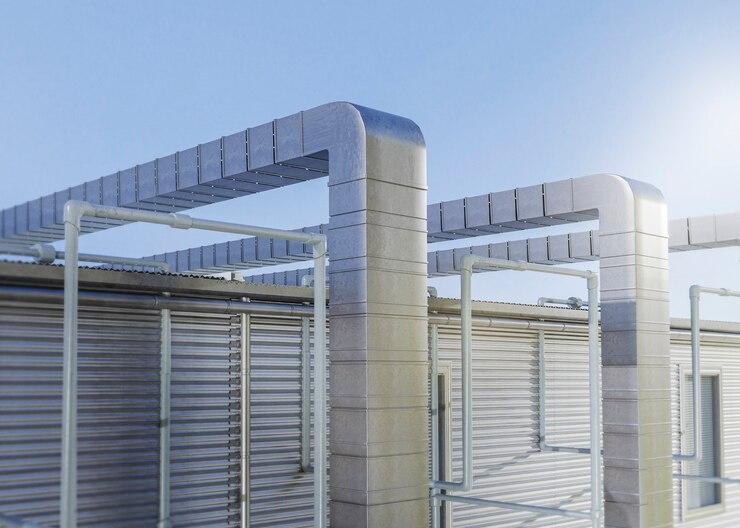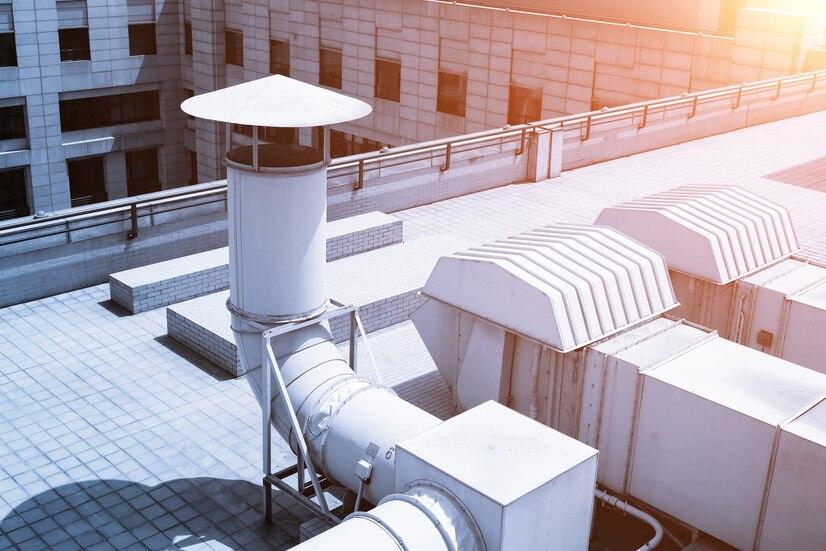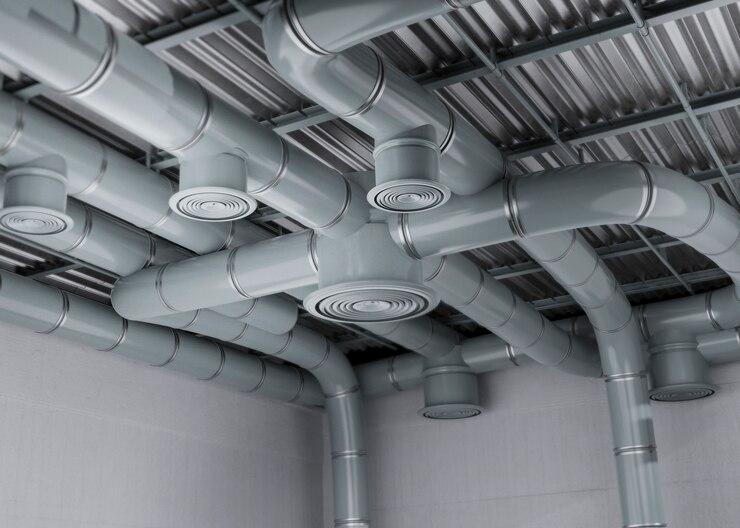



Table of Contents
- Introduction
- Types of Ventilation Systems
- Benefits of Proper Ventilation
- Design Considerations for Ventilation
- Future Trends in Ventilation
- Conclusion
- Faq's
Introduction
Ventilation in real estate refers to the process of providing fresh air circulation within buildings to maintain indoor air quality and ensure occupant comfort. It plays a crucial role in both residential and commercial properties by removing pollutants, controlling moisture levels, and regulating temperature. Effective ventilation systems can improve energy efficiency, reduce health risks associated with poor air quality, and enhance overall living and working environments.
In real estate, proper ventilation is achieved through various systems, including natural ventilation through windows and vents, mechanical systems powered by fans or air conditioning, and hybrid approaches that combine both methods. Design considerations such as building orientation, window placement, and ventilation rates are essential to ensure optimal airflow and air exchange rates within structures.
Understanding the importance of ventilation is vital for developers, architects, and property managers to meet building codes, enhance property value, and promote sustainable living and working spaces. As real estate trends towards more energy-efficient and environmentally friendly practices, ventilation remains a critical component in achieving these goals.
Types of Ventilation Systems
 Ventilation in real estate
Ventilation in real estate
Natural Ventilation: Utilizes natural forces like wind and thermal buoyancy to circulate air. This includes operable windows, vents, and architectural features designed to capture and channel airflow.
Mechanical Ventilation: Relies on mechanical systems such as fans, blowers, and ductwork to circulate air.
Exhaust Ventilation: Removes stale air from indoor spaces, typically in bathrooms, kitchens, and utility rooms.
Supply Ventilation: Introduces fresh outdoor air into a building, ensuring proper air exchange and indoor air quality.
Balanced Ventilation: Combines exhaust and supply ventilation to maintain balanced airflow, reducing pressure differentials and enhancing comfort.
Hybrid Ventilation: Integrates both natural and mechanical ventilation systems to optimize energy efficiency and air quality. This approach adjusts based on external conditions and building occupancy.
Spot Ventilation: Targets specific areas with localized exhaust fans, such as over stoves, in bathrooms, or near other sources of moisture or pollutants.
Whole-House Ventilation: Focuses on ventilating the entire building, ensuring consistent air exchange throughout the property. This type may incorporate central fan systems or distributed ventilation strategies.
Benefits of Proper Ventilation
 Ventilation in real estate
Ventilation in real estate
Improved Indoor Air Quality:
Effective ventilation reduces indoor pollutants, allergens, and odors, promoting a healthier living environment.
Moisture Control:
Helps prevent mold, mildew, and moisture buildup, which can damage building materials and lead to health issues.
Temperature Regulation:
Facilitates air circulation to maintain comfortable indoor temperatures year-round.
Odor Removal:
Eliminates cooking smells, pet odors, and other indoor pollutants, enhancing living conditions.
Energy Efficiency:
Properly designed ventilation systems optimize airflow, reducing the need for excessive heating and cooling, thus lowering energy costs.
Comfort Enhancement:
Provides fresh outdoor air and minimizes stuffiness, creating a more comfortable living or working environment.
Health Benefits:
Reduces the risk of respiratory problems and allergic reactions by ensuring adequate air exchange and reducing indoor air pollutants.
Preservation of Building Materials:
Helps preserve the integrity of building materials by preventing moisture-related damage.
Compliance with Building Codes:
Ensures compliance with ventilation requirements specified in building codes and regulations.
Property Value:
Enhances property value and marketability by offering a healthier and more comfortable living space.
Design Considerations for Ventilation
Ventilation design considerations
Designing effective ventilation systems involves several key considerations to ensure optimal performance and efficiency: Ventilation design considerations
Ventilation design considerations
Building Layout and Size:
Consider the layout and size of the building to determine the most suitable ventilation system type and capacity.
Occupancy and Usage:
Assess the number of occupants, their activities, and the types of spaces (e.g., residential, commercial) to determine ventilation requirements.
Air Quality Requirements:
Evaluate indoor air quality (IAQ) needs based on building use, location, and health considerations to select appropriate ventilation methods.
Climate and Environmental Conditions:
Take into account local climate conditions, including temperature, humidity levels, and outdoor air quality, to design ventilation systems that provide comfort and efficiency year-round.
Ventilation System Types:
Choose between natural ventilation (windows, vents) and mechanical ventilation (fans, HVAC systems) based on building characteristics and energy efficiency goals.
Airflow and Distribution:
Design airflow paths and distribution systems to ensure uniform air circulation throughout the building, minimizing stagnant air pockets.
Future Trends in Ventilation
Future trends in ventilation are poised to integrate advanced technologies and sustainable practices to enhance indoor air quality (IAQ) and energy efficiency:
Smart Ventilation Systems: Integration of IoT (Internet of Things) and AI (Artificial Intelligence) technologies to optimize ventilation based on real-time data such as occupancy, outdoor air quality, and IAQ parameters.
Energy Recovery Ventilation (ERV): Increased adoption of ERV systems that capture and transfer energy between incoming and outgoing air streams, improving energy efficiency while maintaining IAQ.
Demand-Controlled Ventilation (DCV): Implementation of DCV systems that adjust ventilation rates based on occupancy levels and indoor air quality measurements, reducing energy consumption during low occupancy periods.
Natural Ventilation Enhancements: Innovations in building designs to maximize natural ventilation through passive strategies like wind towers, stack ventilation, and building orientation adjustments.
Ventilation Filtration and Purification: Advancements in filtration and air purification technologies to remove airborne contaminants, allergens, and pathogens, enhancing IAQ and occupant health.
Ventilation as a Service (VaaS): Emerging business models where ventilation systems are offered as a service, including maintenance, upgrades, and performance monitoring by specialized providers.
Green Building Certifications: Growing emphasis on ventilation systems that contribute to green building certifications like LEED (Leadership in Energy and Environmental Design) and WELL Building Standard, focusing on IAQ and occupant wellness.
Adaptive Ventilation Design: Development of adaptive ventilation strategies that respond dynamically to changing environmental conditions, occupant behaviors, and building usage patterns.
Zero-Energy Ventilation: Integration of renewable energy sources and energy-efficient technologies to achieve zero-energy or net-zero ventilation systems, reducing carbon footprint and operational costs.
Health-Centered Design: Increasing awareness and implementation of ventilation designs that prioritize occupant health and well-being, particularly in response to global health crises and heightened concerns about indoor air quality.
Conclusion
In conclusion, the future of ventilation in real estate is evolving towards smarter, more efficient, and healthier solutions. Technologies such as IoT, AI, and ERV systems are poised to revolutionize how buildings manage air quality and energy consumption. The emphasis on natural ventilation, coupled with advanced filtration and purification techniques, underscores a commitment to improving indoor environments while reducing environmental impact. As buildings strive to meet increasingly stringent standards for sustainability and occupant well-being, the integration of these innovative ventilation practices will play a crucial role in shaping the buildings of tomorrow, fostering healthier and more productive spaces for occupants worldwide.
explore further
Latest from Encyclopedia
More from Interactions
Resources
Dwello, for every home buyer, is a way to go from 'I feel' to 'I know', at no extra cost.




